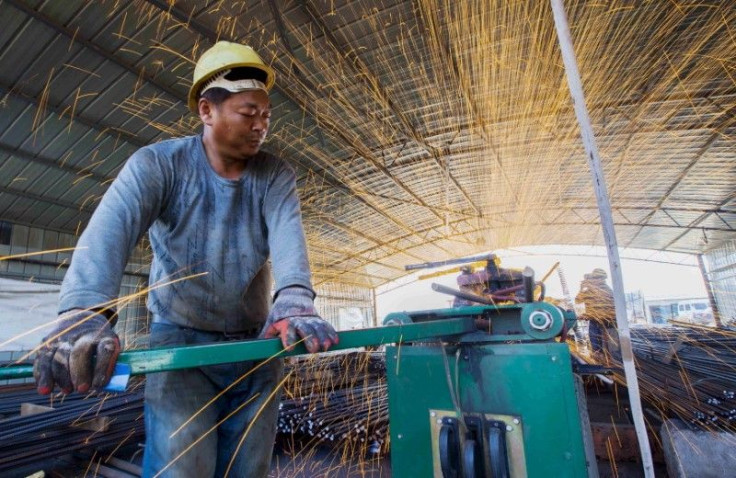China Factory Growth Weakest In Over 2 Years, Export Orders Drop

China's manufacturing sector barely expanded in October and missed expectations, as both domestic and external demand ebbed, in a sign of deepening cracks in the economy from an intensifying trade war with the United States.
The official Purchasing Managers' Index (PMI), released on Wednesday, fell to 50.2 in October, the lowest since July 2016 and down from 50.8 in September. It was a touch above the 50-point mark that separates growth from contraction for a 27th straight month.
Analysts surveyed by Reuters had forecast the official gauge, which gives global investors their first look at business conditions in China at the start of the last quarter of the year, would dip slightly to 50.6 for the month.
The latest reading suggests a further slowing in the world's second-biggest economy and could prompt more policy support from Beijing on top of a raft of recent initiatives.
A production sub-index fell to 52 in October from 53.0 in September, while a new orders sub-index declined to 50.8 from 52.0.
New export orders, an indicator of future activity, contracted for a fifth straight month and at the fastest pace in at least a year. The sub-index fell to 46.9 from 48.0 in September.
China's exports unexpectedly kicked into higher gear in September, largely as firms front-loaded shipments to dodge stiffer U.S. duties, though analysts see pressure building in coming months. The continued slump in export orders may be bearing that scenario out.
October is the first full month after the latest U.S. tariffs went into effect. Washington and Beijing slapped additional tariffs on each other's goods on Sept. 24, and U.S. President Donald Trump has threatened to hit China with more duties.
China's economy grew at its weakest pace since the global financial crisis in the third quarter, as manufacturing output and infrastructure investment slowed. Analysts believe business conditions will get worse before getting better.
Firms are already facing pressure on earnings. A survey over the weekend showed profit growth at the country's industrial powerhouses cooled for the fifth consecutive month in September on the back of a greater slowdown in production and sales.
China's manufacturing sector has been squeezed by a reduction in sources of credit amid Beijing's multi-year crackdown on corporate debt and risky lending practices, with smaller firms especially under strain.
Premier Li Keqiang said last month that the country's economy faces increasing downward pressure, and pledged to take targeted measures to prevent large fluctuations in growth.
Policymakers have already shifted their priorities to reducing risks to growth. Earlier this month China's central bank announced the fourth reserve requirement ratio (RRR) cut for this year, and is expected to ease monetary policy further.
It is also stepping up moves to lower financing costs and pledged more support to private firms, a key source of jobs.
On the fiscal side the government is also stepping up stimulus through infrastructure projects, and has also pledged more tax cuts next year to support growth.
Another sister survey released by the NBS on Wednesday showed growth in China's service sector moderated in September, with the official non-manufacturing Purchasing Managers' Index (PMI) dipping to 53.9 from 54.2 the previous month.
(Reporting by Lusha Zhang, Stella Qiu and Ryan Woo)
-Reuters
© Copyright Thomson Reuters 2024. All rights reserved.





















